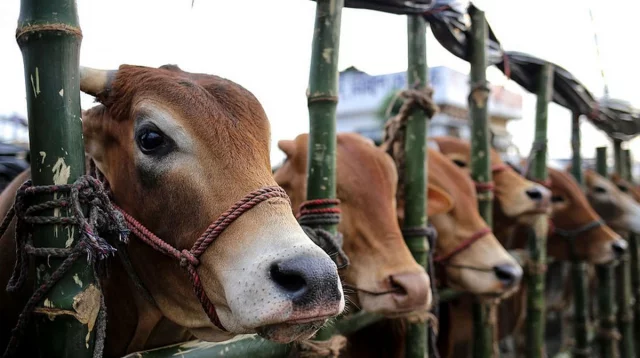There is no shortage of sacrificial animals ahead of Eid-ul-Adha this year, with the country registering a surplus of over 20.68 lakh livestock against the projected demand, confirmed the Ministry of Fisheries and Livestock.
According to ministry data, an estimated 1.28 crore animals will be available for sacrifice during the religious celebration, expected to be observed in the first week of June.
This includes 56.02 lakh cattle and buffaloes, 68.38 lakh goats and sheep, and more than 5,500 other animals in livestock surplus.
Fisheries and Livestock Adviser Farida Akhter, speaking at a recent press conference, said the domestic supply will be more than sufficient to meet the Eid demand.
She added that the interim government is actively training farmers to discourage the use of harmful substances, including steroids and hormones, in animal fattening, to ensure food safety and animal welfare.
Secretary, in-charge of the Ministry, Md Tofazzel Hossain, while talking to BSS, expressed optimism that the Eid-ul-adha markets would maintain a fair and balanced atmosphere for both buyers and sellers.
“The price depends on supply and demand. Based on our surveys, the gap between them is minimal, so we expect prices to remain stable,” he said.
Tofazzel added that adequate measures would be in place to ensure market security and livestock quality during the Eid season.
According to ministry sources, officials from the Department of Livestock Services (DLS) are currently providing direct support to farmers in rural areas and closely monitoring animal welfare practices on the ground.
Meanwhile, a silent revolution is underway in livestock production, attributed to sustained government initiatives. These include the widespread distribution of bakna calves — female calves not yet bred — to marginalised farmers.
To date, over one lakh free bakna calves have been distributed in districts such as Lakshmipur, Faridpur, Noakhali, Sirajganj, Jhalakathi, Narayanganj, and Rajshahi.
The Ministry has invested more than Tk 10,000 crore in 8–10 major livestock development projects.


